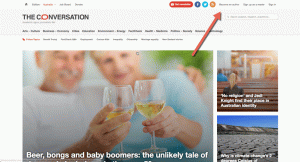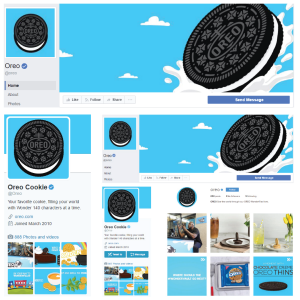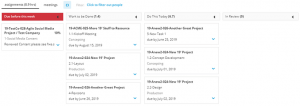
As you’re browsing online, you probably notice the ads across your favorite web pages. Some ads may be extremely relevant to you, while others might seem suspicious or spammy. Small-to-medium-sized businesses are getting their name across the web using these visual ads, also known as display ads or banner ads. Display advertising can be an integral part of your online marketing strategy, but there are some facts you should know before deciding to get started.
Here are seven things you need to know about online display advertising.
1. SMBs are continuing to invest more in display advertising.
Your competitors are likely considering the use of banner ads, if it’s not already a part of their marketing mix. Budgets for display adverting are growing year over year based on increased competition and the need to generate leads with assisted brand recognition. In fact, it’s one of the top marketing channels for SMBs.
2. You can target consumers who have already been to your site.
Retargeting is a display advertising tactic in which you can show your ads to consumers who have previously visited your site but didn’t take action. It’s important to think about how you can keep your brand in front of consumers as they’re browsing online, reading articles, and spending time online outside of search engines. If you can keep your business top-of-mind for consumers through retargeting, you will be able to help remind them to come back to your website when they’re ready to purchase.
3. You can target consumers based on their online behavior.
In addition to targeting consumers who have previously visited your site, you can also serve your ads to consumers based on what they’re searching for and other sites they’re visiting. These sites can be identified as having content relevant to your services and your potential customers’ interests. You can even serve ads to consumers who share similar interests and behaviors to your current target audience through lookalike audiences.
4. Targeting can be as precise as specific addresses.
Display advertising that’s intended to raise awareness for your business is usually targeting a large area like an entire city, metropolis, or region. However, it’s also possible to target specific addresses and serve your ads only on the mobile devices of potential customers as they visit these locations. This is called geofencing. Your ads can be served on their phones even after they leave your targeted address. You should advertise compelling offers that entice consumers to take action by coming back and converting into customers. Another possible strategy is to target your competitors’ locations, and use your offers to bring their potential customers through your door.
5. Switch out your display banners to avoid ad fatigue.
When your display campaigns go live, you don’t want them to continue running without any updates or changes. You should change out your ads with new designs, visuals, and offers every three months or so. This will help your display banners avoid ad fatigue, which is when ads draw less attention from potential customers because they’ve been seen too many times. Even the most relevant and compelling ads can become less effective by being tirelessly exposed.
6. You should use animated and static display ads.
The ads we most commonly see online tend to be static, which means they’re just images without any animations. These images are most commonly uploaded as JPG or PNG files. When designing these ads, some best practices include using images that effectively grab the attention of your online audience with a clean and clutter-free layout. Display ads that include animation used to be in Flash format, but HTML5 is now becoming the popular standard as search engines are opting to stop showing Flash ads. Animated ads can help grab your audience’s attention by simply changing out images, text, and offers.
7. The true measure of success for display advertising is visibility.
Tracking ROI is important for all of your marketing efforts, but you can’t attribute customer conversions from the success of individual marketing channels like silos. Some channels, whether it’s traditional or online, may be more action and response-driven, while others serve to keep your business in front of potential customers so they can purchase when they’re ready. The main goal of display advertising is to drive impressions, which is the number of times your online audience sees your ads. Visibility online will help keep your brand top of mind for your customers as they interact with your business through other media channels. The more exposure you can get through display advertising, the more likely your marketing efforts as a whole will help drive results for your business.
Even if you already have a solid customer base, display advertising can help you reach new potential customers that may otherwise choose your competitors over you. As consumers adapt to constantly evolving ways to interact online, you need to think about how to grab their attention with compelling messages and offers. Stay true to your business, take stock of your brand’s value, and start getting your name out there.
Digital & Social Articles on Business 2 Community(36)







